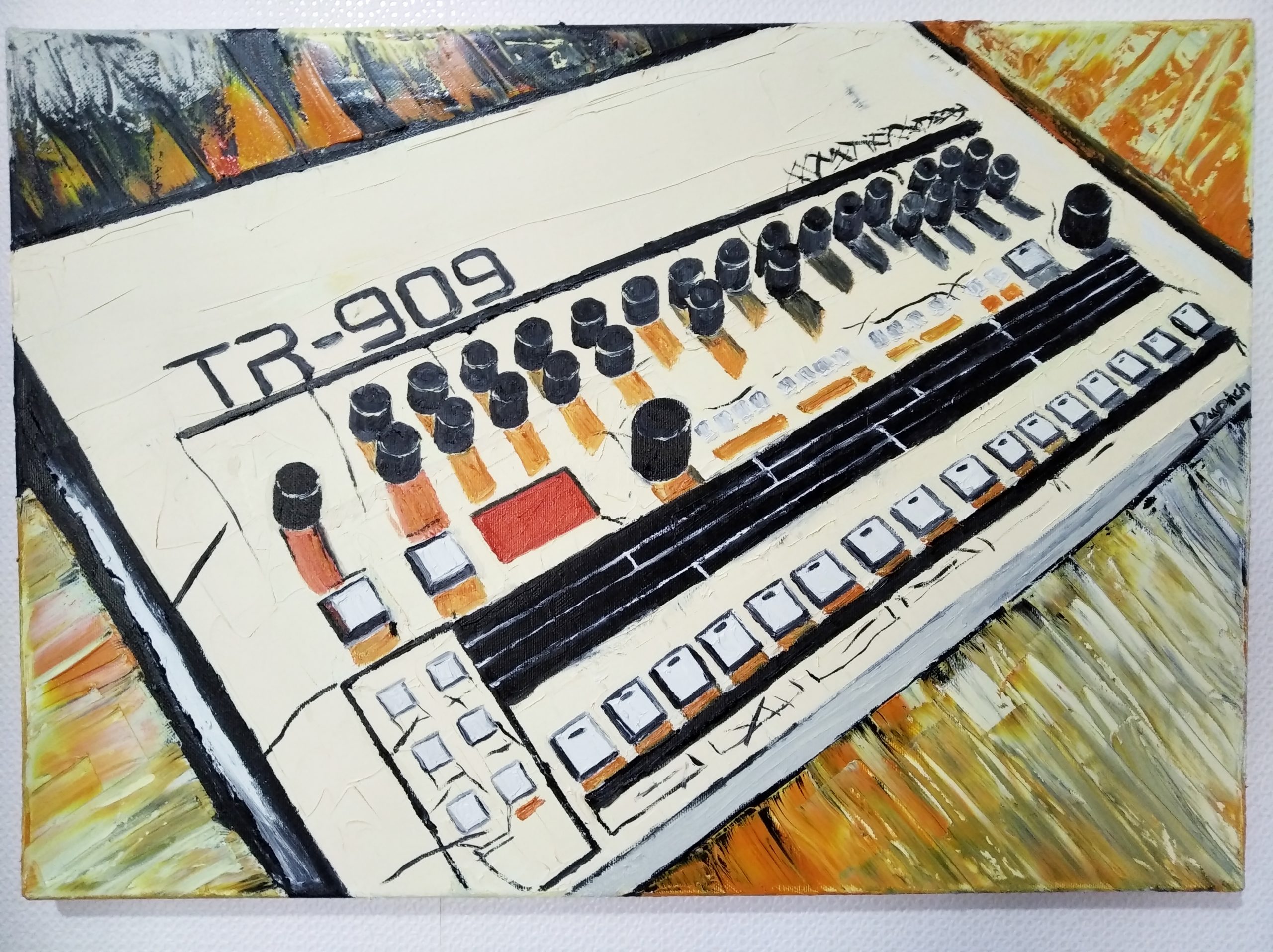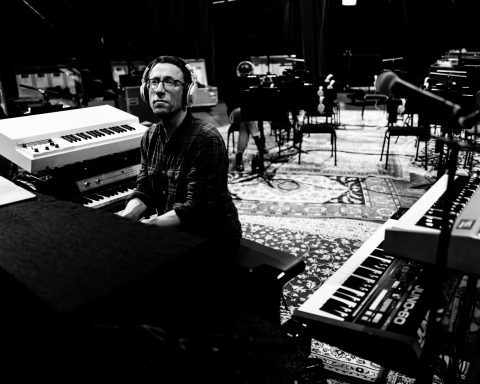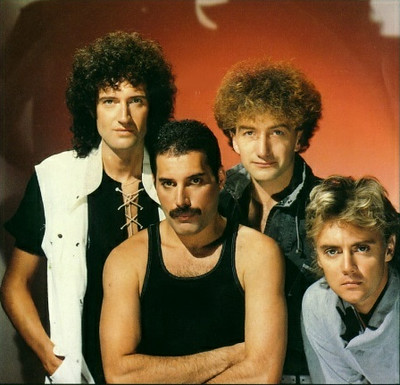Plenty of musical art is created using synthesizers. But what about art that depicts synthesizers themselves as the focus? Long the tools used to help producers achieve their sonic visions, synthesizers and other types of music-making equipment are now front and center in the visual domain. From oil paintings to digital illustration, miniature sculptures to industrial design, synthesizers as art are finally earning their day in the gallery limelight.

Crazy Oil Arts
Iconic Inspirations
Nicola Dudich is a Ukrainian painter who goes by the name of Crazy Oil Arts. His paintings feature music-making hardware almost exclusively. Still, rather than render them in photo-realistic detail, he uses the texture-rich impasto technique. Dudich applies oil to his linen and cotton canvases with palette knives, only using brushes for fine detail work. His restless, Fauvist-style pictures are also bursting with color—as if Matisse were a DJ in his spare time.
With so many subjects to choose from, why focus on synthesizers? “It’s strange,” Dudich says, “but synthesizers give me inspiration. My art is something like feedback. Every piece of music gear deserves to be on the canvas. But some legendary synthesizers and drum machines I love more.” For example? “I love the legendary TR-808 and TR-909 for their iconic sounds and design. I have a few ideas for new pictures of TR-808 and 909 which you’ll see soon.”
Tactile Texture
Dudich is passionate about synthesizers but not merely as physical objects. Unsurprisingly, he’s a musician as well. “I’m a DJ and electronic live artist under the names Nub and Mismas,” he explains. “I use many synthesizers and samplers to create music in my studio.”
"I love to feel my synthesizers—to turn knobs, push buttons and keys and hear the sound change." -Nicola Dudich (Crazy Oil Arts)
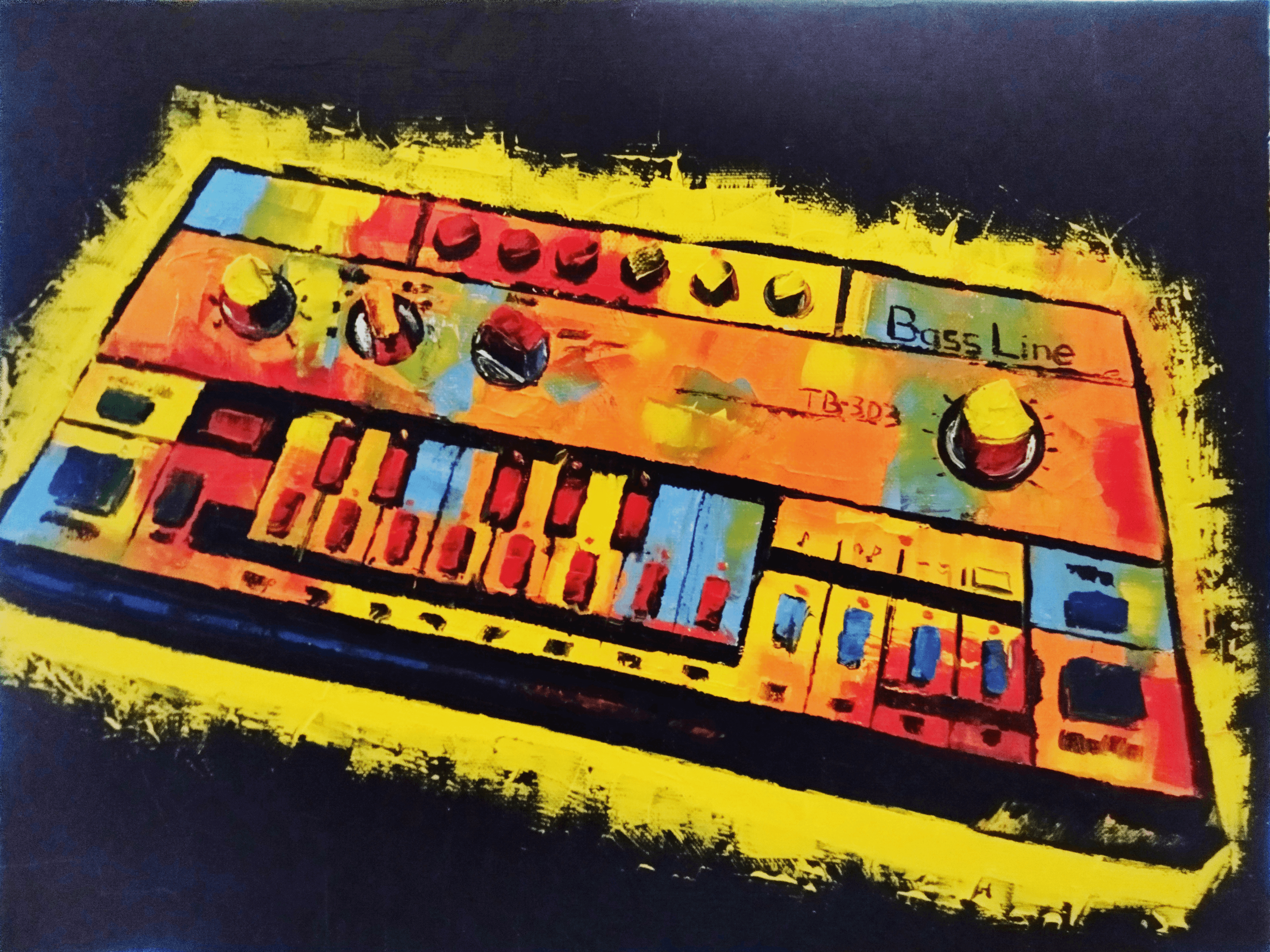
When asked what it is he likes most about musical equipment, Dudich answers from the heart. “I love to feel my synthesizers—to turn knobs, push buttons and keys, and hear the sound change. The tactile feel.”
Roland gear is a significant part of his art, both visual and musical. “I love legendary and modern devices by Roland,” he says. “Two of my favorite synthesizers are the Roland SE-02 and VP-03 Vocoder from the Boutique series. I love their sounds and small size. Size is important for live artists because you need to travel with your hardware.”
Macro Paintings and Euroracks
On the subject of the types of paintings he creates, Dudich shares, “I love to make macro paintings. Like a Eurorack module on a big canvas. Or just a part of a synthesizer in macro. Sometimes you don’t need to show people the full synth for them to understand the concept.”
It’s not always easy, as Dudich is quick to point out. “Once I was making a painting of a big modular synthesizer system, and it had many, many tiny details. It was hard on my eyes. But I was satisfied with the work, and it was a great experience.”
As for his general philosophy, Dudich combines art and music on the canvas to pay tribute to the gear and creators. “I help electronic musicians make their workplaces more individual and creative.”
About the Artist
Find Nicola Dudich on Instagram.
All Images Courtesy of Nicola Dudich
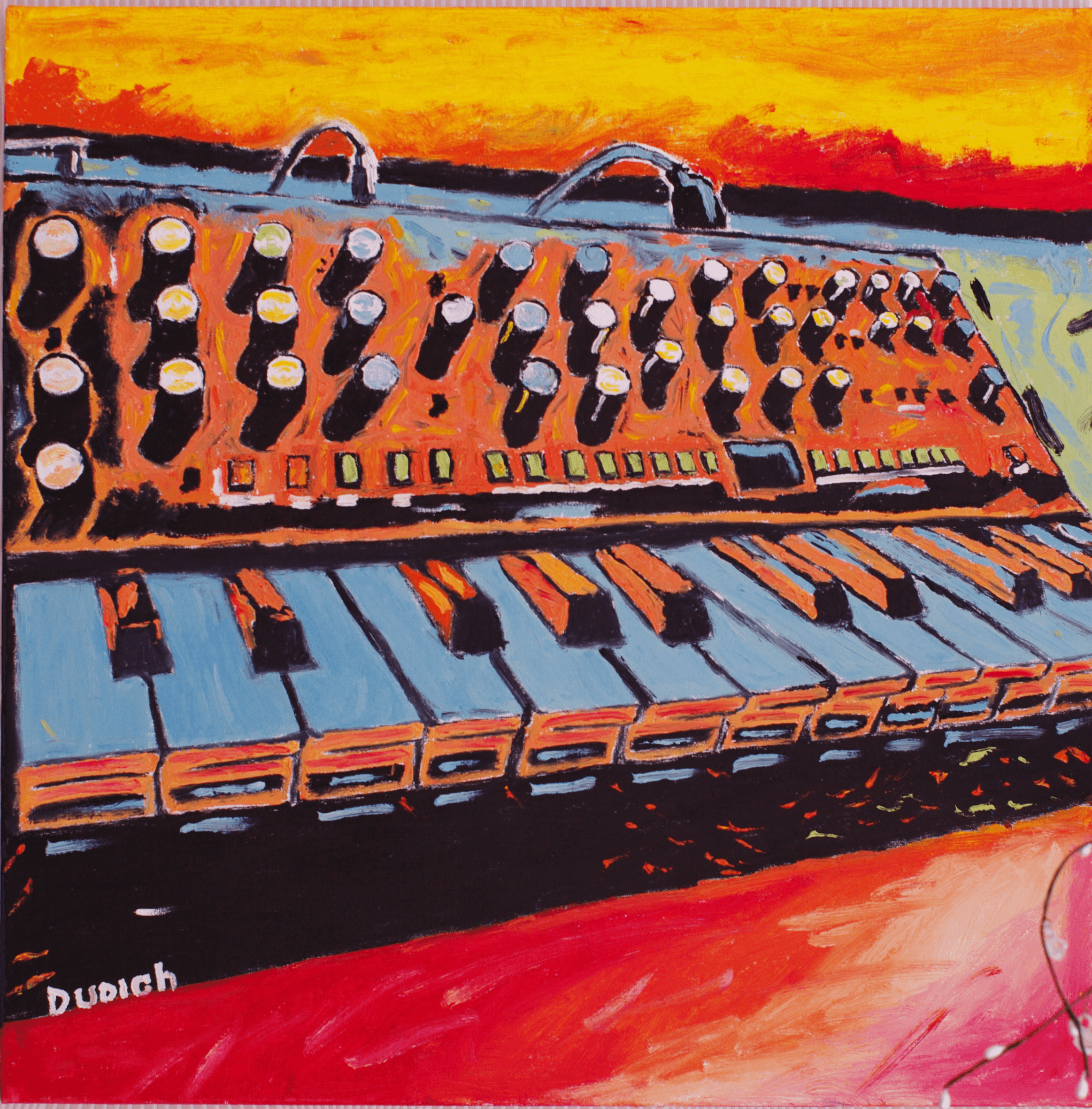
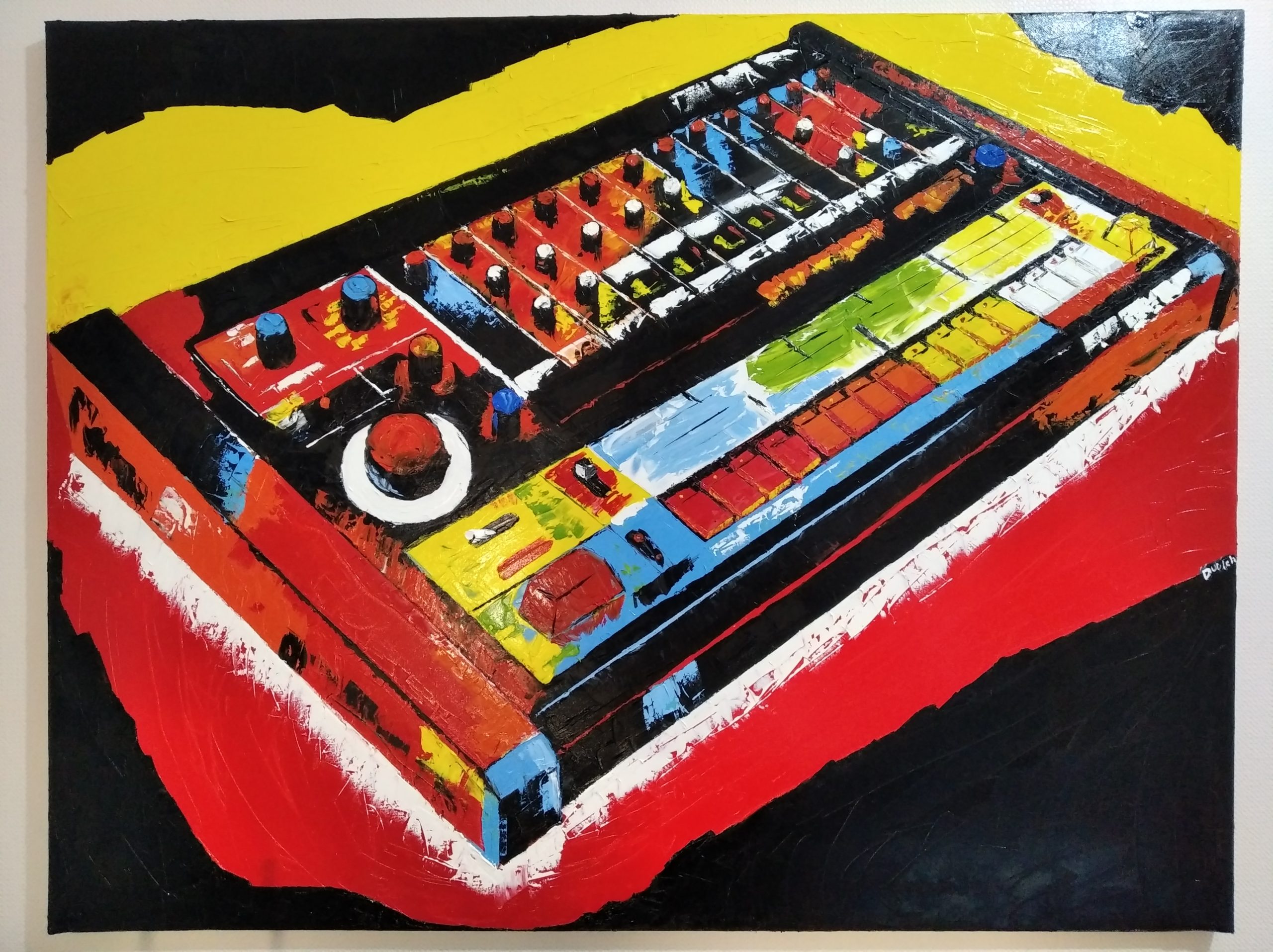


Captain Cosmotic
Masters Reimagined
The image is familiar. A group of men stand around a table, focused intently on a demonstration. It’s unquestionably the famous 1632 painting, The Anatomy Lesson of Dr. Nicolaes Tulp, by Rembrandt. And yet something is different. The cadaver on the table is gone, replaced by a pair of Roland TR-909s and a mixer. It has a delightful new title as well: The Analog Drum Machine Lesson of Dr. Jochem Paap. This is the work of Captain Cosmotic.
Captain Cosmotic, known by his friends as Ansgar, is a digital artist from Münster, Germany. He spends his free time adding synthesizers and DJ equipment into classical art and posting the results on his Instagram page. His work is playful and often humorous. Yet, a clear love of the equipment is central to his singular approach.
Electro Background
“I’ve been in love with electronic music since I was a kid,” Ansgar explains. Starting with Kraftwerk, Depeche Mode, and Tangerine Dream, a chance viewing of a live TV broadcast of Carl Cox playing changed his life. “I had never heard anything quite like that before. They broadcasted the whole night. After that experience, I became addicted to everything related to electronic music.”
So how did he start making classical art mashups? “I studied fine art in the Netherlands. It started with my addiction to Photoshop and an obsession with trying to be funny. So I started doing lots of memes for The Worst Techno Memes Ever Facebook group. I also started mashing Renaissance paintings with modern forms and current artists. As I received feedback for this artwork, I started doing these collages and got hooked.”
“Everything related to synthesizers is art,” he explains. “When you turn on a machine and play, from the first tones you start making art. There are endless possibilities in creating music. New compositions, soundscapes, or whatever you want. That has a lot in common with surreal art.”
"When you turn on a machine and play, from the first tones you start making art. There are endless possibilities in creating music."
-Captain Cosmotic

Curating and Creating
To create his images, he combs through his collection of art books and searches online. After that, it’s a matter of using Photoshop to insert a piece of gear. But how does he know what will work? “I follow my intuition, and I’ve made so many of these paintings that most times I know which instrument will fit. Technically it’s not that hard. It’s more about having a great idea for a new painting. When I have something in mind, I start working on it intuitively.”
Roland instruments frequently show up in his designs. “I’ve been a big Roland fan since my youth. The first machine I fell for was the TB-303. And of course, I use Roland equipment not only in the paintings. I make music with my Roland TB-3, Roland TR-8, SYSTEM-1, and Ableton. The best thing is, my boys Toni (four) and Noah (two) love jamming on them as well.”
About the Artist
Find Captain Cosmotic on Instagram.
All Images Courtesy of Captain Cosmotic



Ronaldo Lopes Teixeira Rolt
Smaller than Life
Synthesizers can sometimes seem larger than life, especially when played by someone like Keith Emerson. But what if an artist depicted these outsized instruments in miniature form? This is the theme of the work of Sao Paulo, Brazil-native Ronaldo Lopes Teixeira Rolt. He assembles astonishingly realistic miniatures of famous electronic instruments.
A retired illustrator, Rolt started making art with synthesizers much like Captain Cosmotic. He inserted them into famous Renaissance paintings. However, he didn’t stop with the gear. “A long time ago, I started making montages in homage to great keyboardists. I used Renaissance pictures and replaced the faces of the artists,” he explains. “Something caught my attention when I put a mini MiniMoog in the hands of Rick Wakeman. I decided to make a real miniature of it.”
Tool Time
To create his lifelike miniatures, Rolt uses a variety of tools. These include knives, brushes, paints and varnish, metal parts, plastic objects, acrylic, paper, and “any kind of thing that fits on.” The hard part is figuring out “what material or object fits my needs to create a specific synthesizer miniature.” His mini-sculptures include the main instrument as well as peripherals, accessories, even floppy disks.
"For me, it's a way to spread feelings and make creativity a way to reach people who love music and art as a whole."
-Ronaldo Lopes Teixeira Rolt
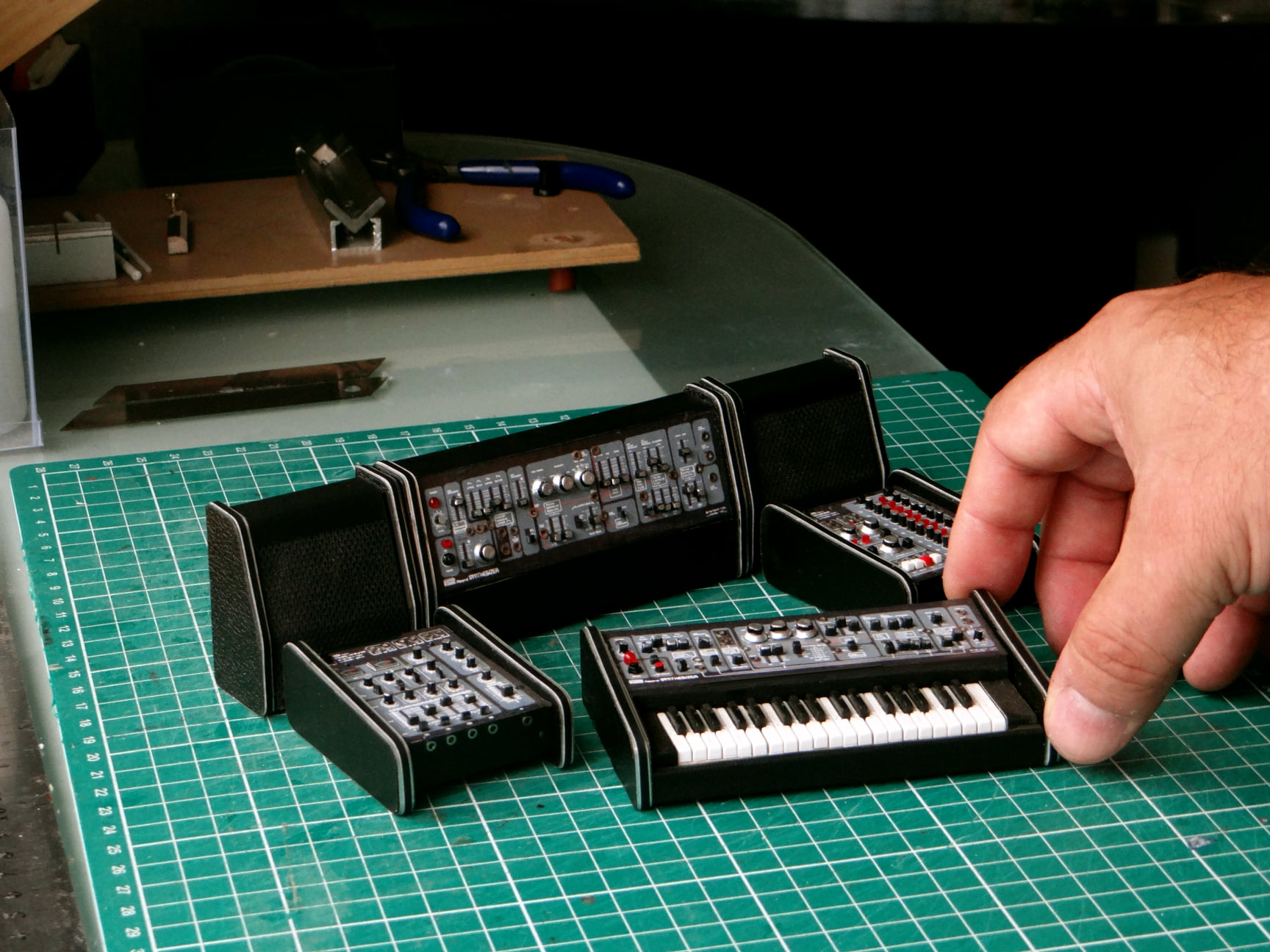
Rolt is a self-professed amateur keyboard player in a Genesis cover band. When asked about his artistic philosophy, he explains, “For me, it’s a way to spread feelings and make creativity a way to reach people who love music and art as a whole.” His fans include Peter Baumann of Tangerine Dream, Jordan Rudess, JJ Abrams, and Dave Smith of Sequential as well as Brazilian musicians Mu Carvalho, Carlos Trilha Mûller, and Miguel Kertzma.
About the Artist
Find Ronaldo Lopes Teixeira Rolt on Facebook.
All Images Courtesy of Ronaldo Lopes Teixeira
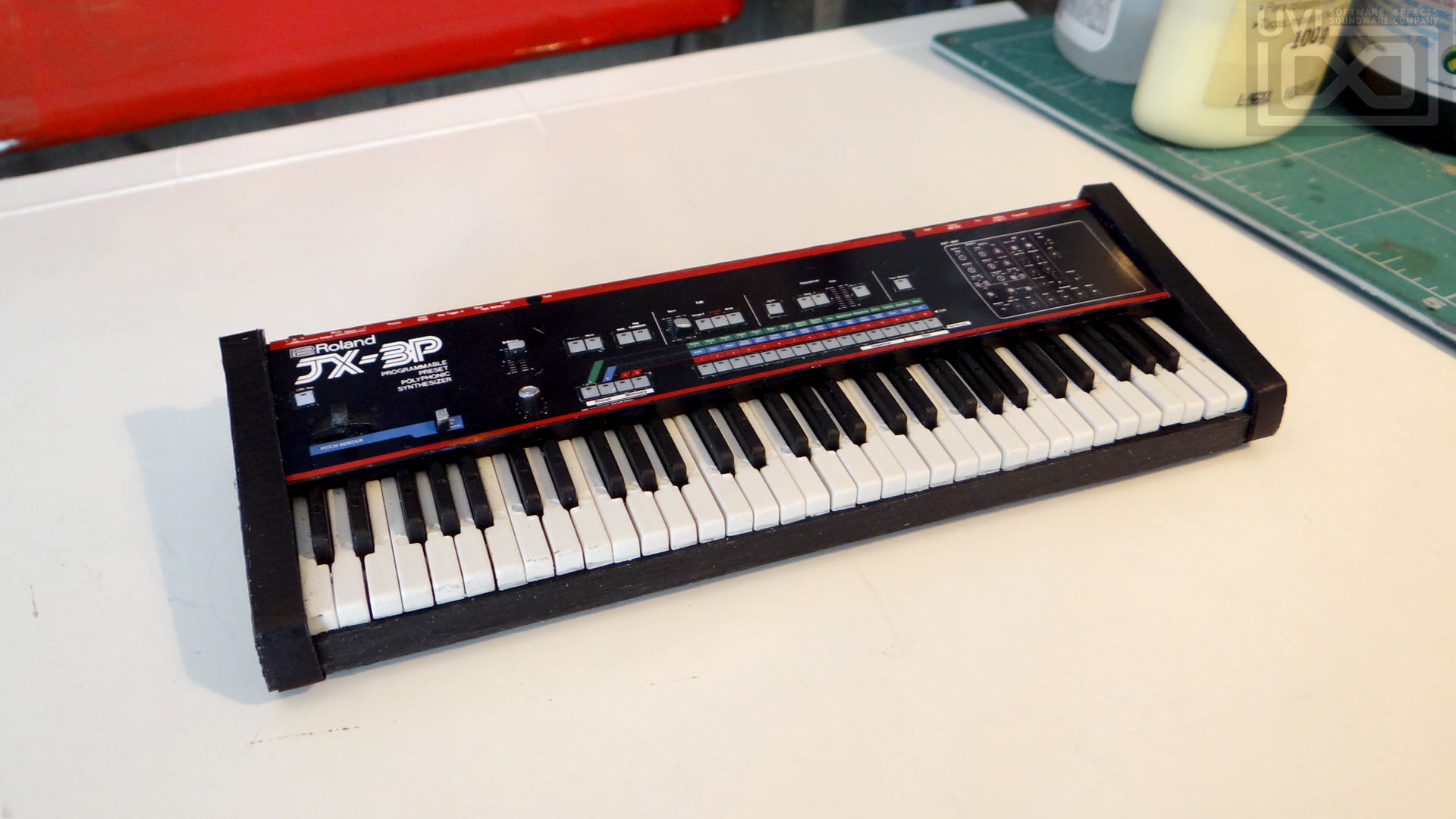
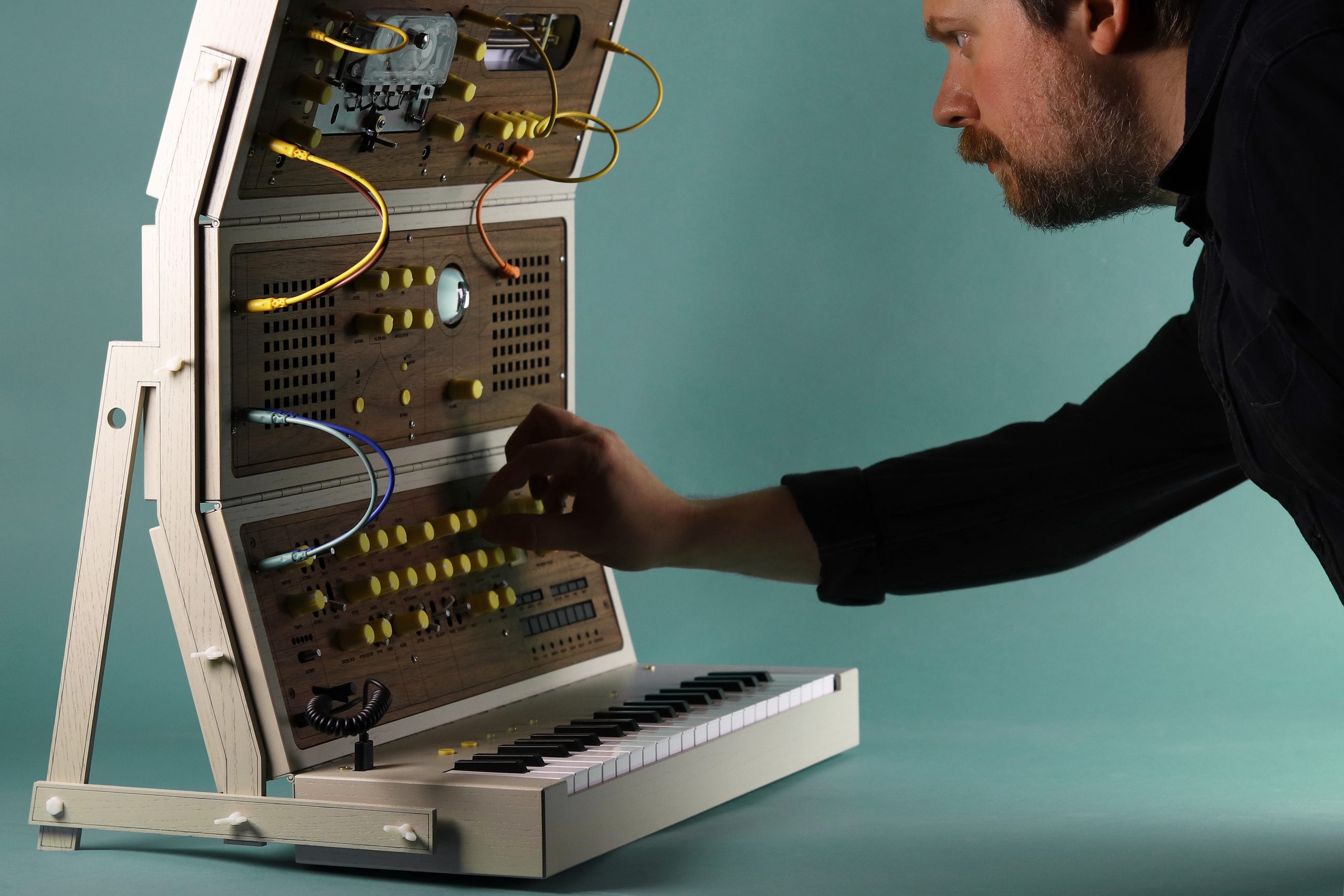
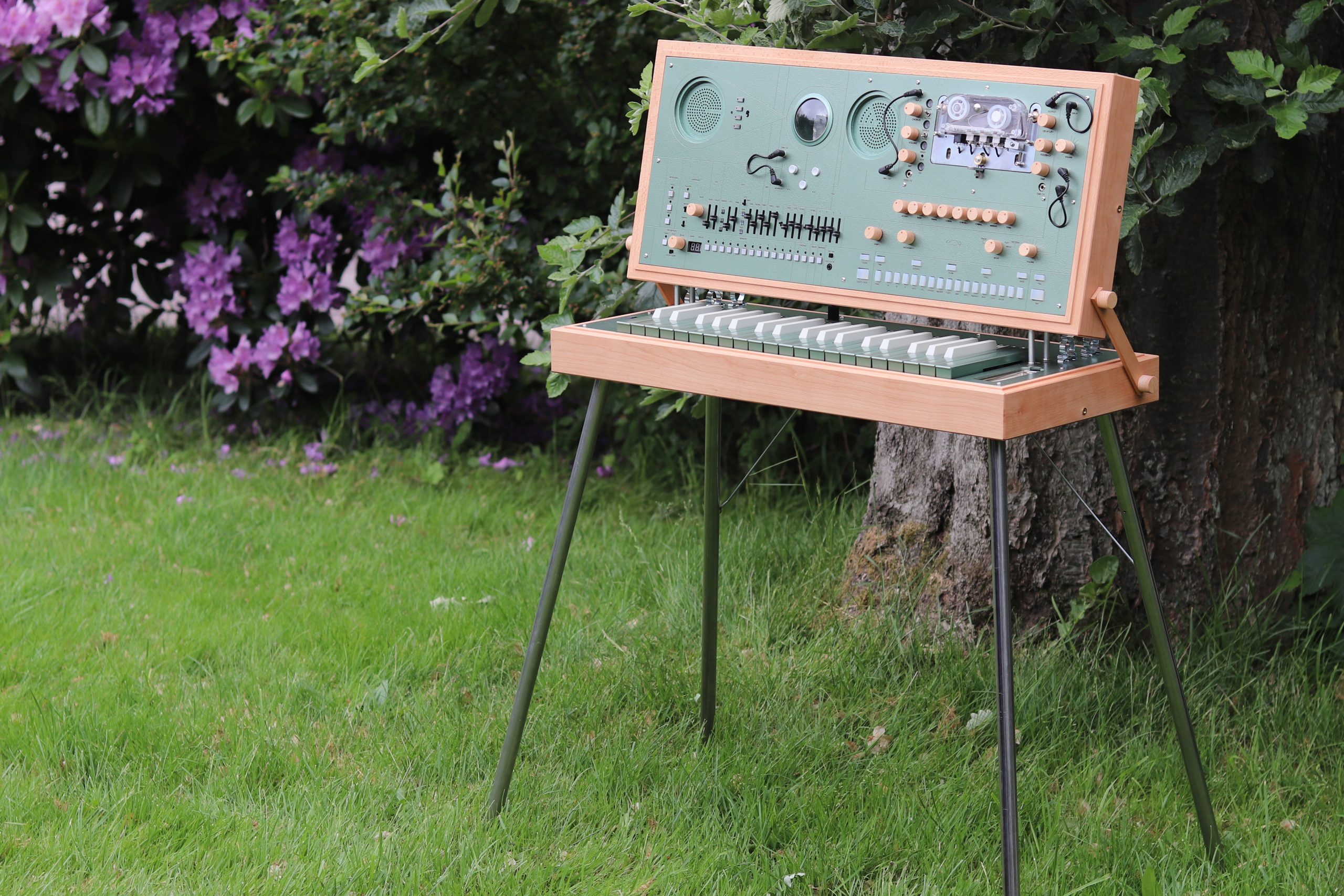
Love Hultén
A Direction in Design
While the artists above use gear as their subject, for Love Hultén, the design is the art. Using wood and other materials, Hultén fashions original instruments out of existing ones. His work is both nostalgic and futuristic, harkening back to the mid-20th century while also looking forward to a sci-fi future.
Hultén, who hails from Gothenburg, Sweden, got his start early. “As a young boy, I used to tear electronic toys apart to understand their insides,” he explains. “I attended school for design in 2010 and discovered a passion for woodwork there. I started to combine wood with electronics in my first year and created my first hardwood case. It was a desktop computer.” The piece was a watershed moment for Hultén. “After that, I went on, making tactile synths, game consoles, and other audiovisual contraptions.” Ultimately, his creations “combine traditional craftsmanship with modern technology.”
Now working full-time and doing all the work himself, Hultén operates out of a small woodworking shop with a “rather big” laser cutter. “The laser cutter is fundamental when working with control panels for synths.” There is a meaning behind why he makes new instruments out of existing ones. “The aesthetics of electronic products mirror where we are today in terms of technical possibilities,” Hultén explains. “This is the nature of tech. What is affecting product design negatively today is the industry itself.”
"I aim to create products that will breathe through time. Unique products that sparkle and live on through generations."
-Love Hultén

Recycle and Reimagine
Hultén bemoans “the throwaway excess products the industry keeps churning out to consumers frightened by expiration dates.” He sees his art as a response. “My work is a reaction to that. I’m inspired by mid-20th century concepts when we had a different view on tactility, quality, and craftsmanship,” Hultén reveals. “I aim to create products that will breathe through time, rather than get suffocated by it. Unique products that sparkle and live on through generations.”
As for why he focuses on musical equipment as his subject matter, Hultén has a straightforward response. “I’m a musician myself, so naturally I like devices that make noise.” No surprise, Hultén does have a preference for tactile, vintage-style instruments. “I also like to work with analog stuff. It’s way more logical for me, more educational.”
On a Roland Basis
Hultén often uses Roland synthesizers as the basis for his instruments. He’s also a fan. “I love the warmth of the JUNOs. Vintage Roland drum machines have always played a part in my setup—from the CR-78 to the TR-707. I also find the Boutique series very nice when building custom setups. They help reduce footprints, and they make my job a lot easier. I wish there were more of them.”
Life as a one-man operation has its drawbacks, however. “Being on your own is hard work, and to make everything functional is hell. My pieces are nice to look at but they still have to work. I’m no engineer, I’m a wood guy who likes electronics as a hobby. I should definitely look into hiring people soon, people with actual engineering skills.”



These insights lead to an obvious question, does Hultén have any plans to create original instruments? “I wish to take that path eventually,” he answers, “creating my own synth architectures and such.” Unlike the artist’s current work, this wouldn’t be a solo venture. “I would not be able to do that by myself obviously, it would need to be a collaboration somehow.”
About the Artist
Find Love Hultén on Instagram.
All Images Courtesy of Love Hultén
